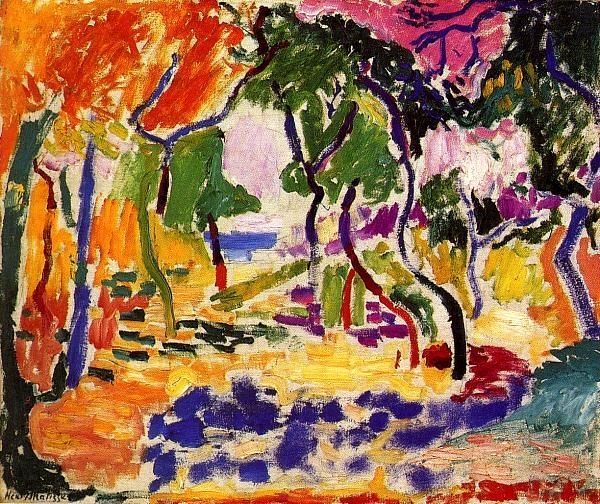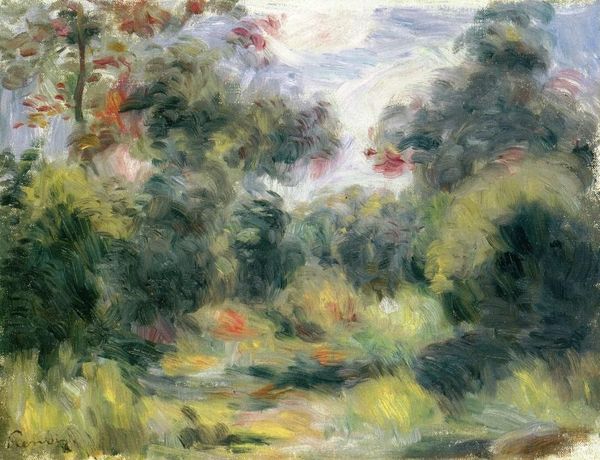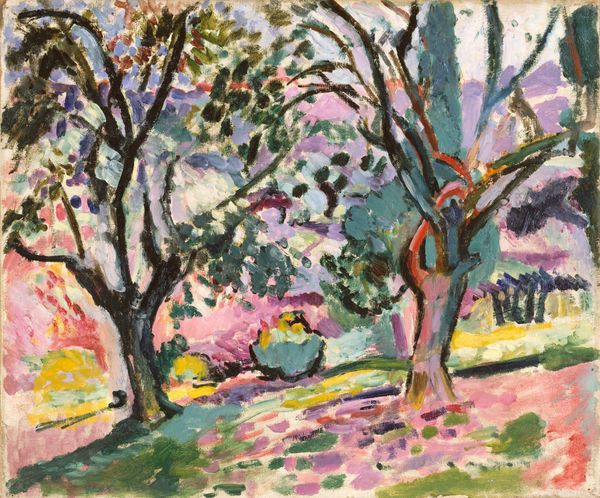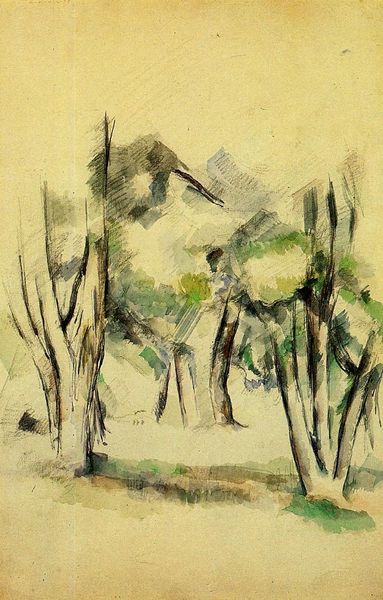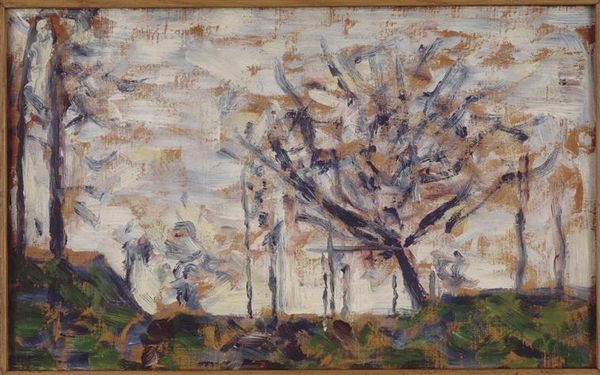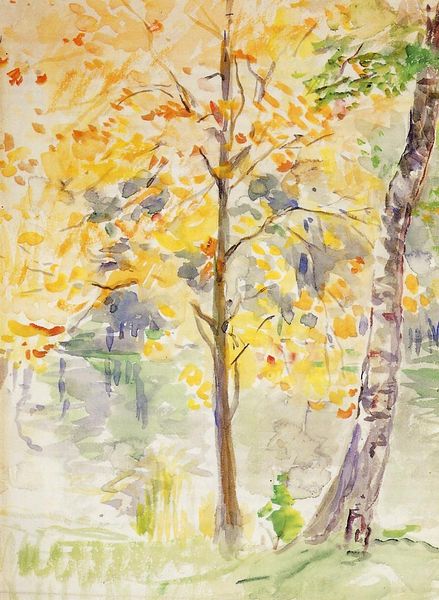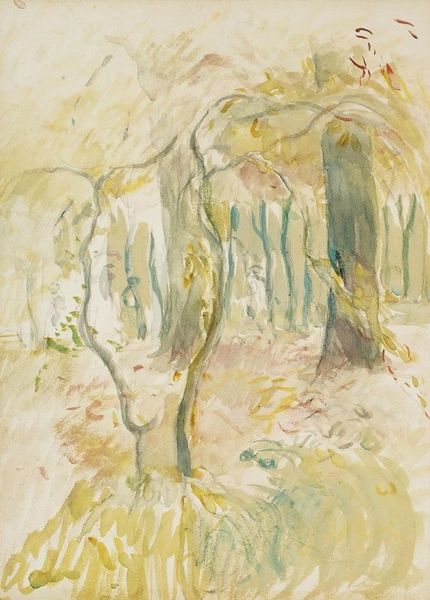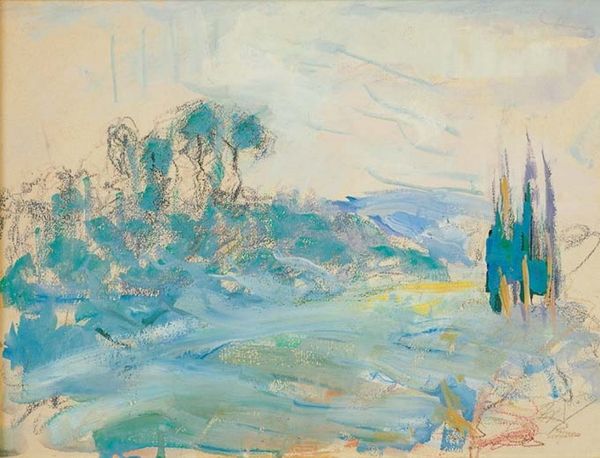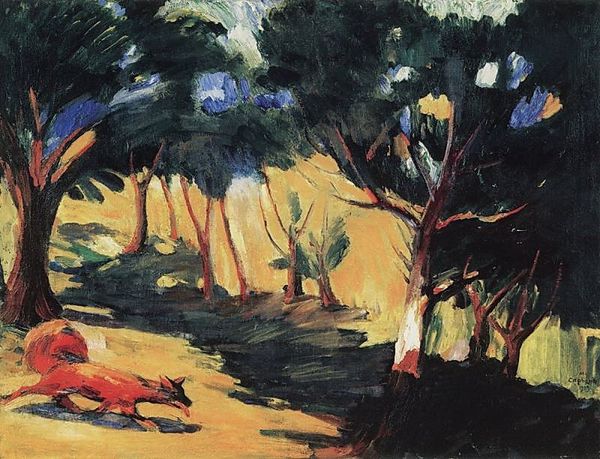
plein-air, watercolor
#
tree
#
impressionism
#
plein-air
#
landscape
#
house
#
impressionist landscape
#
watercolor
#
forest
#
watercolor
#
building
Copyright: Public domain
Editor: We are looking at Berthe Morisot's "Autumn in the Bois de Boulogne" from 1884, rendered in watercolor. It evokes a sense of being lost in the woods, and yet, it also feels quite light. What can you tell us about the structural aspects of this piece? Curator: Notice how Morisot uses horizontal and vertical lines to create depth, drawing the eye into the composition. See how the vertical tree trunks are countered by the horizontal strokes that represent foliage and ground cover? This intersection builds a spatial environment, and reinforces an interest in rendering a fleeting atmospheric condition. Editor: The way she suggests forms with these fleeting strokes is so interesting. The colors seem almost arbitrary. Curator: Indeed, but the chromatic selection is quite intentional. The subtle gradations of green, brown, and purple act to create a sense of volume and recession into space, however. Observe how she strategically places the highlights, these flecks of bright pigment suggest an impression of sunlight filtering through the canopy. Do you find this adds to the spatial complexity? Editor: Yes, I see that. It’s as if she’s built up the painting with light and shadow, more than with clearly defined forms. The buildings in the background almost disappear. Curator: Precisely. Consider the balance and interplay of those formal elements -- how they create the harmony of the work. The way Morisot manipulates space using value and chromatic intensity achieves something beyond mere representation, something more like an embodied, temporal experience. Editor: So by paying close attention to the line, color, and space, the emotional or atmospheric quality makes more sense as a result of formal interplay. I see the picture more clearly now. Curator: As do I. Returning to these pieces offers new insights at every turn.
Comments
No comments
Be the first to comment and join the conversation on the ultimate creative platform.


